As a kombucha brewer, you may have noticed your SCOBY pellicle looking a little odd lately. There’s a chance you have an overgrowth of Kahm yeast! In this article we’ll outline everything you need to know about kombucha and kahm yeast.
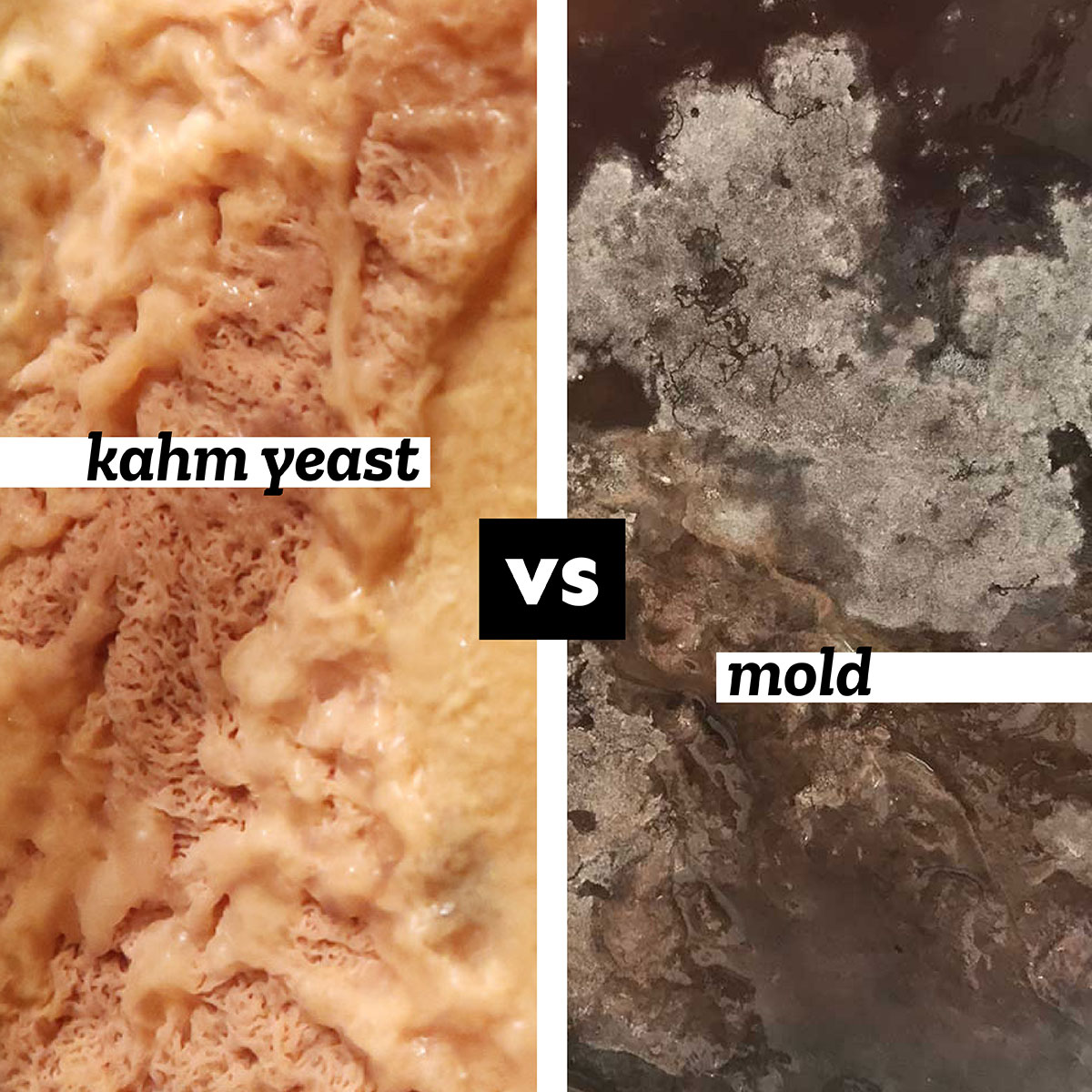
My most asked question I get from brewers is the infamous “is it mold?”. And often the answer is that it’s not mold, but in fact a layer of kahm yeast!
Whether you’re a beginner or an experienced brewer, understanding and managing kahm yeast will help you maintain the quality and flavor of your kombucha. So, grab a glass of your favorite brew and let’s dive in!
Here’s What We’ll Cover
- What Is Kahm Yeast?
- Why Does Kahm Yeast Form?
- What Does Kahm Yeast Look Like?
- Is Kahm Yeast Safe?
- Preventing Kahm Yeast
- Kahm Yeast vs Kombucha Mold
- What To Do If You Have Kahm Yeast
What Is Kahm Yeast?
Kahm yeast is a collective term for many types of wild yeast (including yeast varieties like Mycoderma, Hansenula, Debaryo-Myce, Pichia, and Candida).
Kahm yeast can occur during the fermentation process of kombucha and other fermented foods and beverages (like vegetable pickles, sauerkraut, kefir, and sourdough starter). It is a non-pathogenic yeast species commonly found in the environment, including fruits and various fermented products.
Kahm yeast is a common occurrence in kombucha brewing and can sometimes appear as a thin, white film or patches on the surface of the brew. It is a type of wild yeast that forms due to exposure to oxygen. Unlike the SCOBY (Symbiotic Culture of Bacteria and Yeast), which is essential for kombucha fermentation, kahm yeast is considered an unwanted guest.
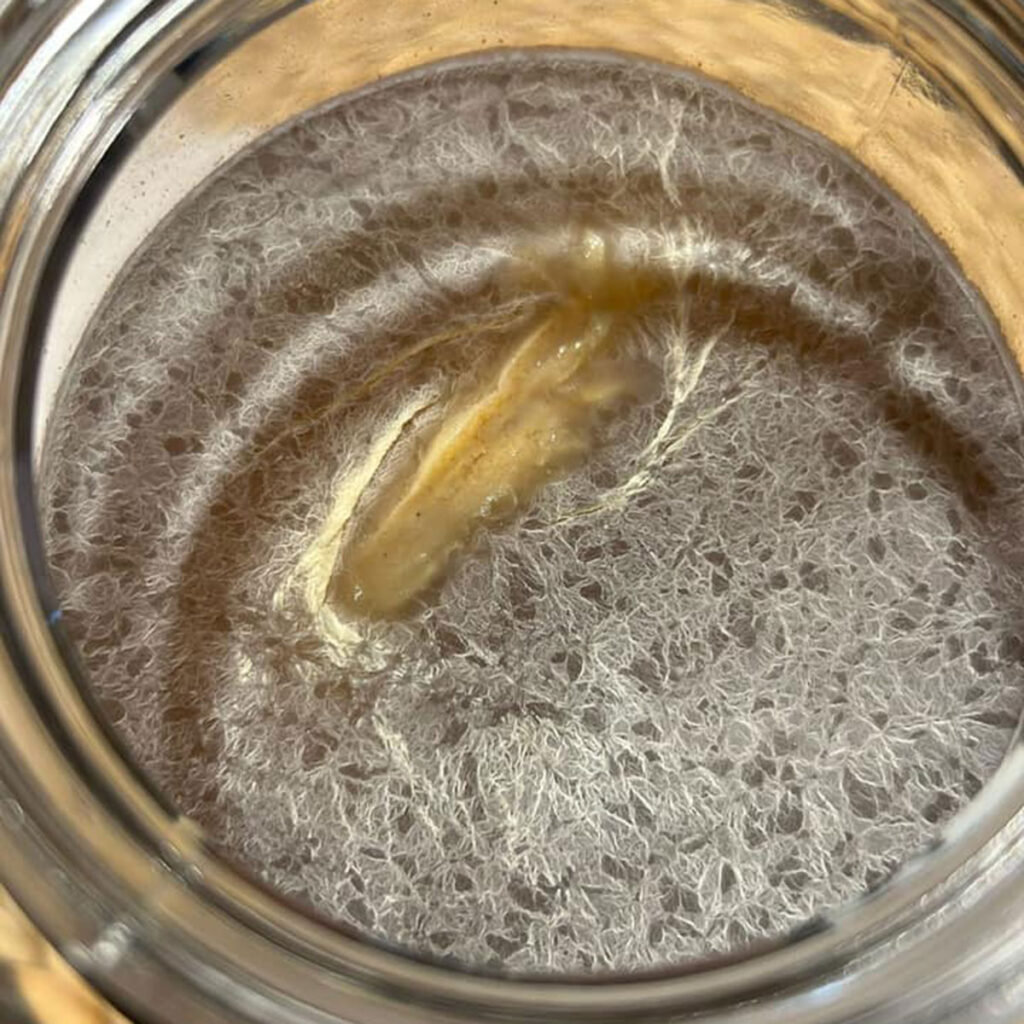
Why Does Kahm Yeast Form?
Kahm yeast can develop in kombucha due to various factors, including inconsistent brewing conditions, improper pH levels, contamination in your jar, or fluctuations in temperature. These conditions create an opportunity for wild yeast to thrive and colonize the brew.
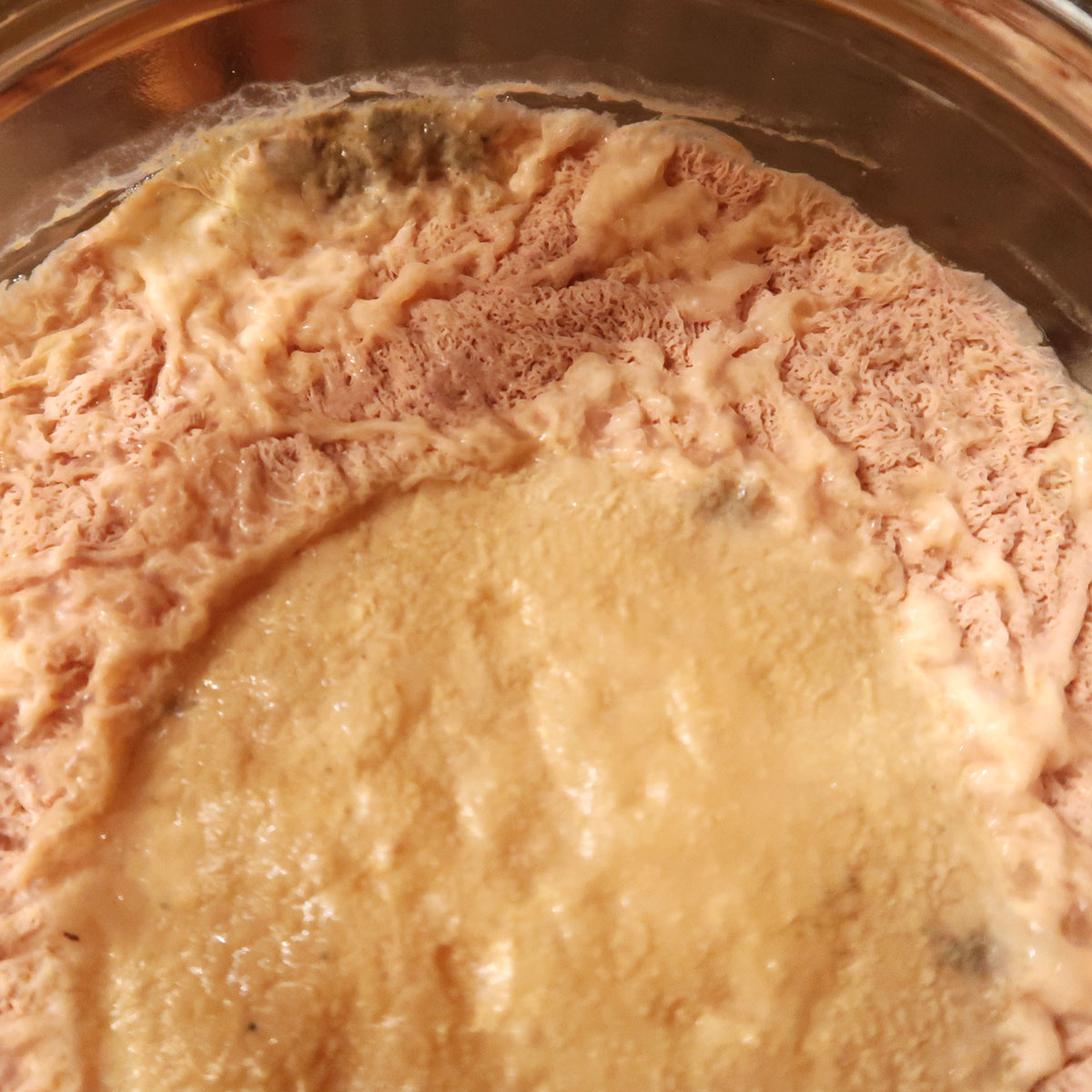
What Does Kahm Yeast Look Like?
Kahm yeast is typically white or cream-colored, resembling a thin film or patches on the surface of the kombucha. It might have a wrinkled appearance and can be mistaken for mold.
Unlike mold, kahm yeast doesn’t have a fuzzy texture or grow in multiple colors. It usually has a vinegar-like smell and does not pose any significant health risks.
Here are a few photos of kombucha kahm yeast for your reference. (Have a kahm yeast photo and want to include it in this gallery to help more people ID potentially moldy kombucha? Email me!)
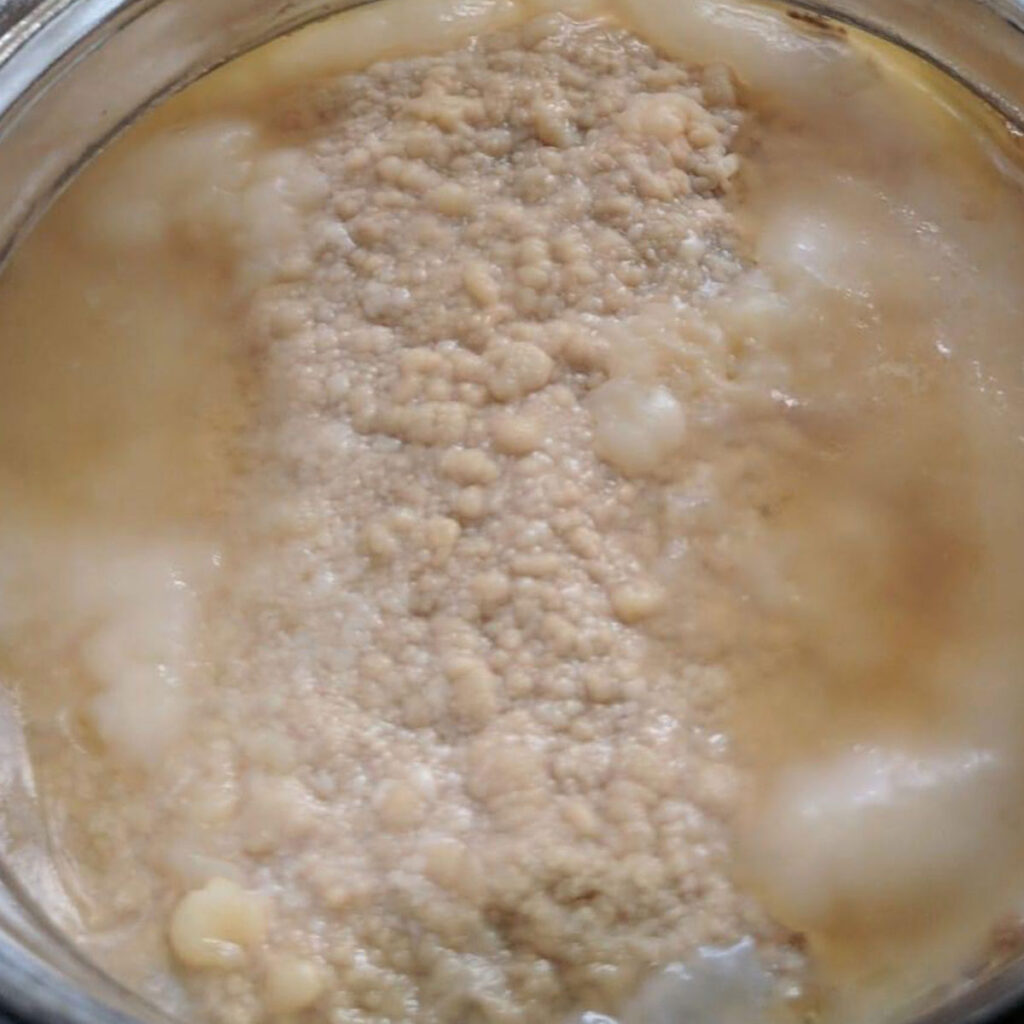
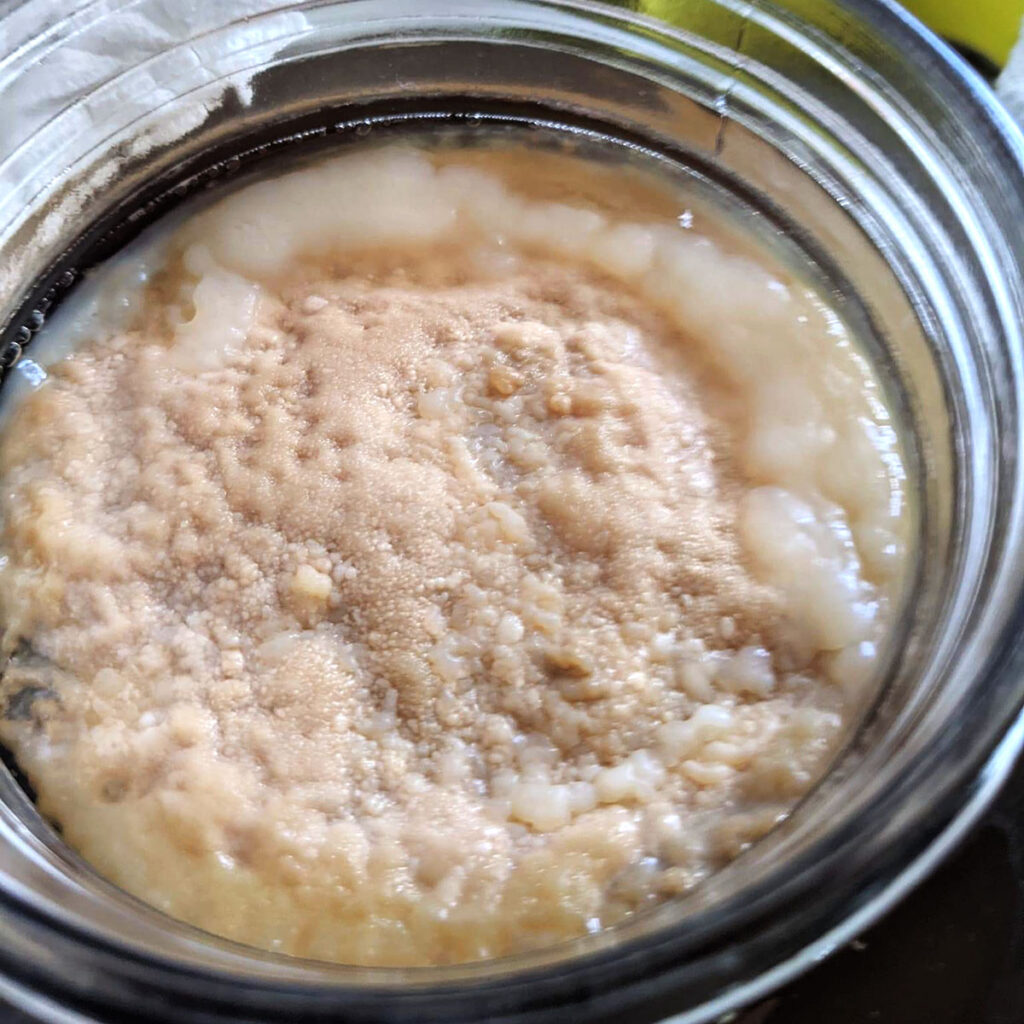

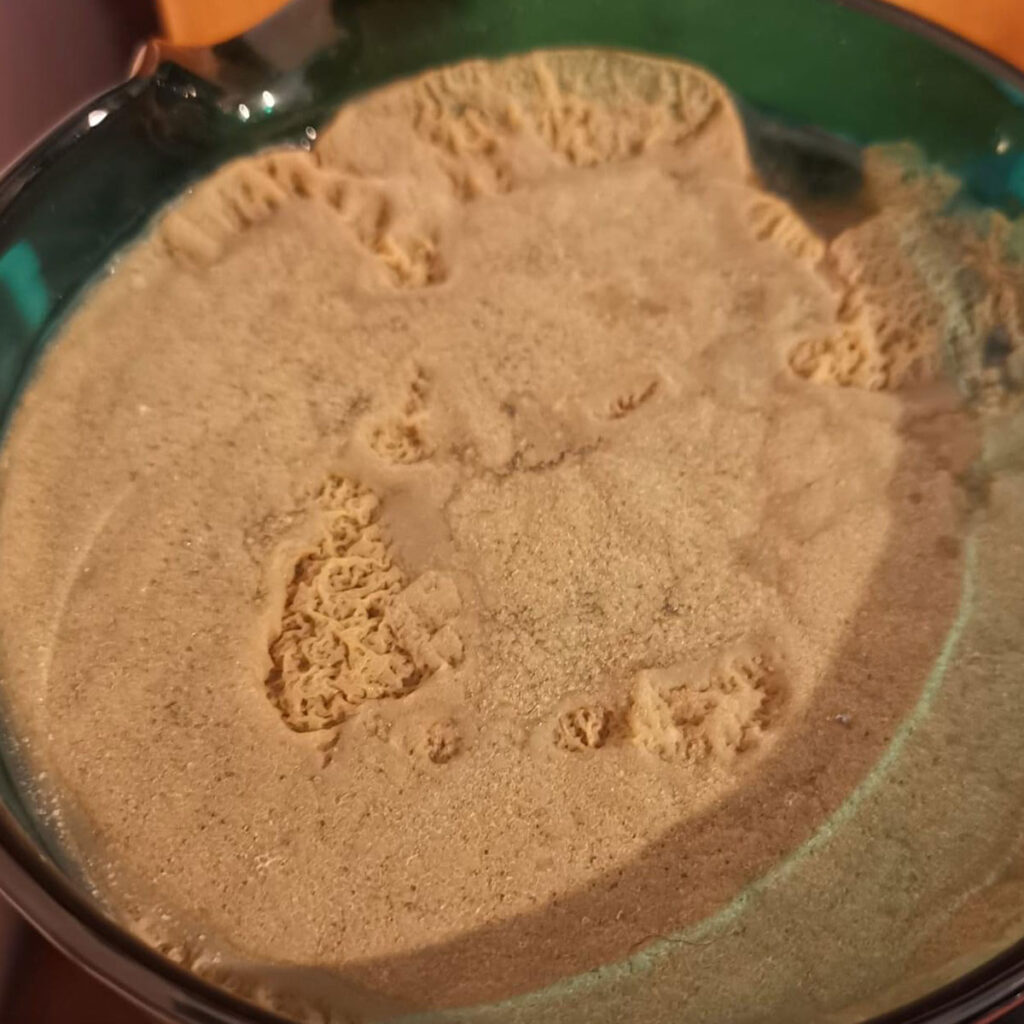
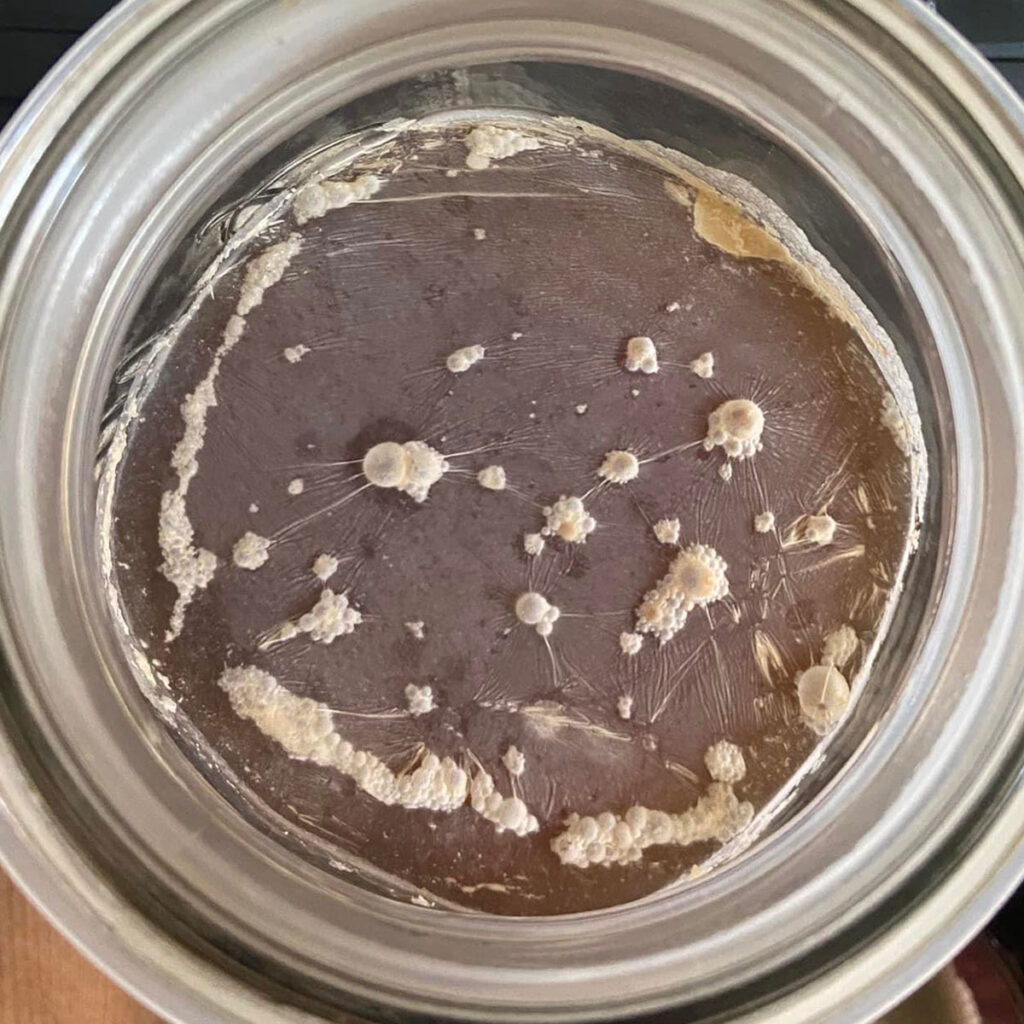
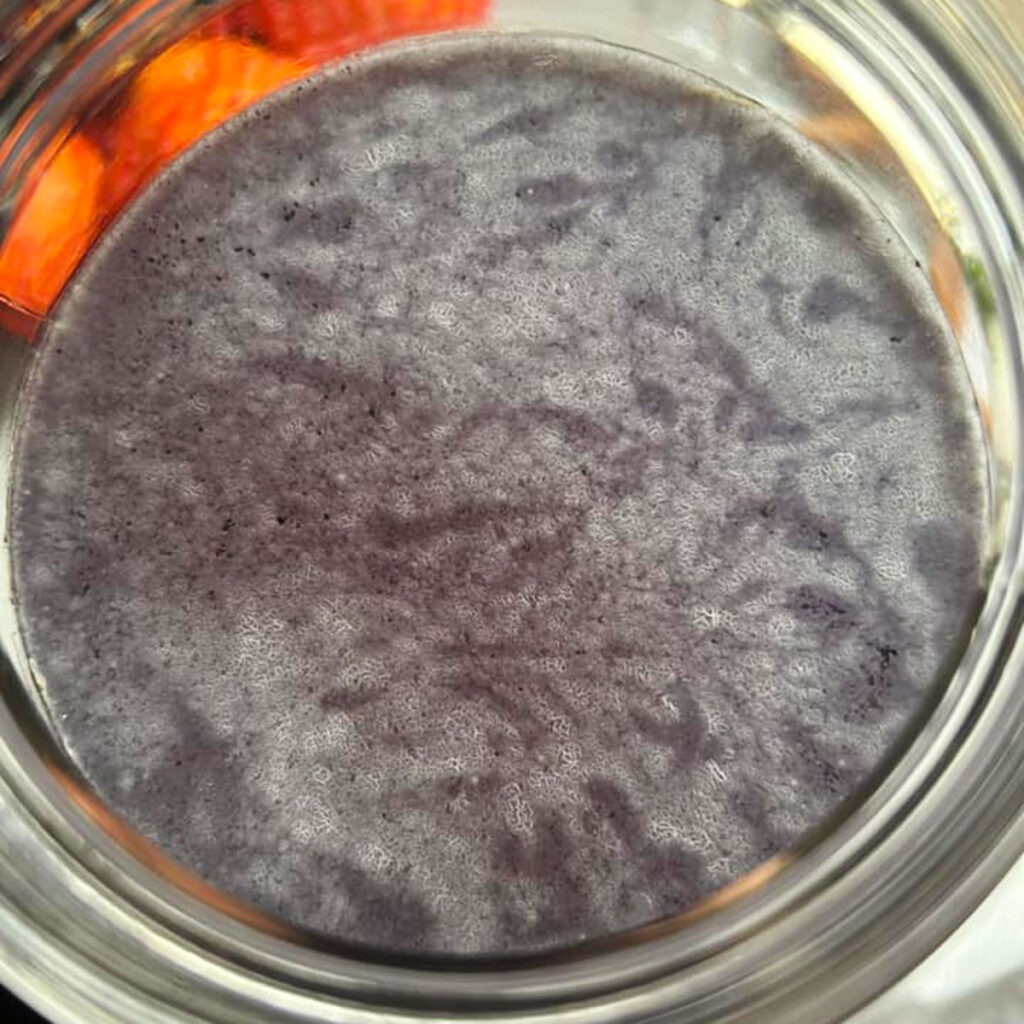


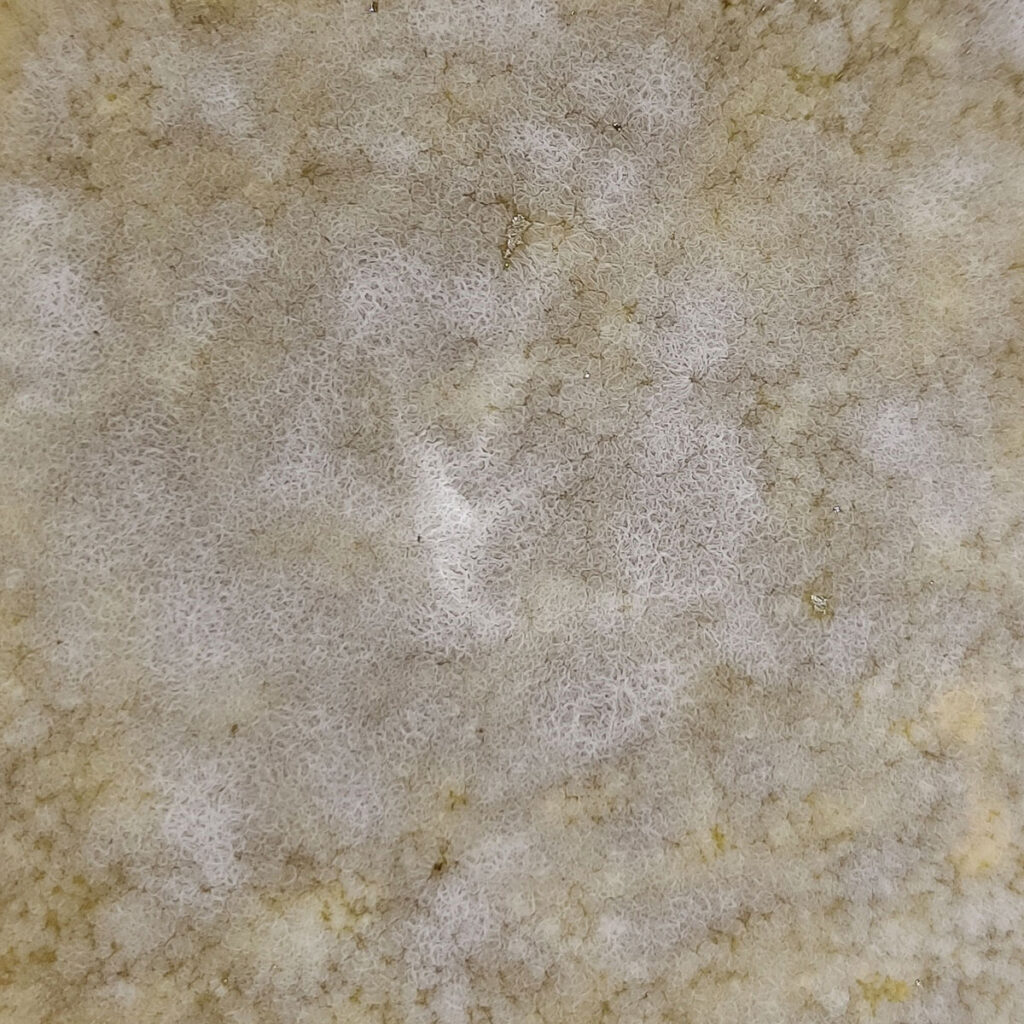
Is Kahm Yeast Safe?
While kahm yeast is generally harmless, it can affect the taste and texture of your kombucha. It may introduce off-flavors, making the brew taste taste rotten or unpleasant. The presence of kahm yeast can also hinder the growth and activity of the SCOBY, potentially leading to a slower fermentation process.
“Can I use the “old” scoby I was using to brew the batch that had yeast in it, or do I need to make a new one?”

Preventing Kahm Yeast
Here are some useful tips to manage kahm yeast in your kombucha brewing process:
Maintain a Healthy Environment: Ensure proper hygiene and cleanliness during the brewing process. Sanitize your equipment, bottles, and brewing vessels to minimize the risk of contamination. Starting with clean utensils is half the battle!
Consistent Brewing Conditions: Maintain a stable temperature for your kombucha (ideally between 70-80°F or 21-27°C) and pH level (around 4.0-4.5) to create an environment favorable for the SCOBY and discourage the growth of kahm yeast.
Cover the Brew: Use a tight-knit cloth or coffee filter secured with a rubber band to cover your brewing vessel. This helps prevent exposure to oxygen and minimizes the chances of kahm yeast formation.
Remove Kahm Yeast: If you notice kahm yeast forming on the surface of your kombucha, carefully skim it off using a clean spoon or ladle.
Balance Your Ingredients: Properly proportioned tea, sugar, and starter liquid help maintain a healthy fermentation process. Avoid using excessive tea or sugar, as it can lead to imbalances and create favorable conditions for kahm yeast.
By understanding the nature of kahm yeast and implementing preventive measures, you can maintain a thriving kombucha culture and enjoy delicious batches of homemade brew. Remember, kahm yeast is a common occurrence, and with proper care, you can minimize its impact on your kombucha’s flavor and quality. Happy brewing and cheers to your homemade kombucha adventures!
(Note: If you have concerns about mold growth or experience any unusual changes in your kombucha brew, it’s always a good idea to discard the batch to ensure your health and safety.)
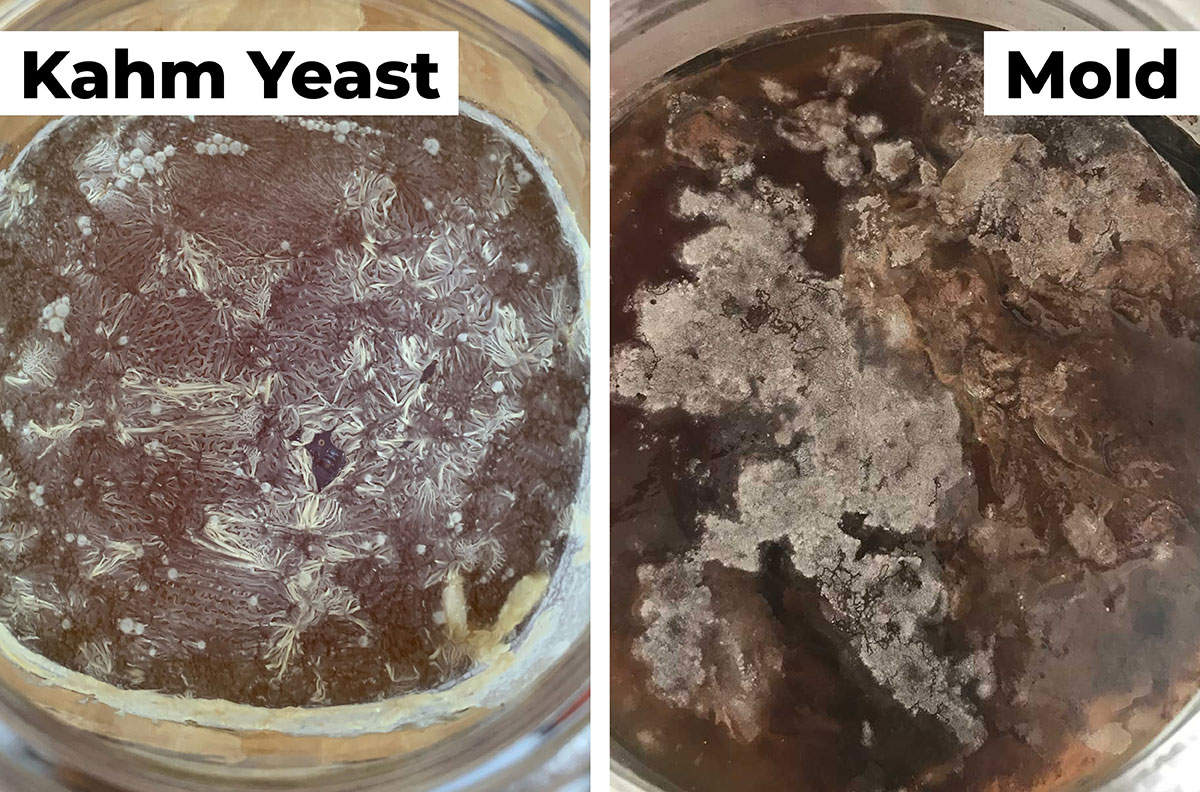
Kahm Yeast vs Kombucha Mold
Texture: Kahm yeast generally has a thin, smooth texture, similar to a film. Mold, however, often exhibits a fuzzy, cotton-like texture. The fuzzy appearance is due to the mold’s branching hyphae (filaments) that intertwine and create a visible network.
Kahm yeast and mold are two distinct types of microorganisms that can be encountered during the fermentation process, including in kombucha brewing. Here are the key differences between kahm yeast and mold:
Appearance: Kahm yeast typically appears as a thin, white or cream-colored film or patches on the surface of the liquid. It may have a wrinkled or slightly textured appearance. On the other hand, mold often exhibits a fuzzy or powdery texture, and its color can vary, ranging from green, blue, or black to other shades.
Color: Kahm yeast is primarily white or cream-colored, while mold can display a wide range of colors, depending on the species. Mold colors commonly encountered in kombucha include green, blue, black, or even pink.
Health Risks: While kahm yeast is generally harmless and does not pose significant health risks, mold can be a cause for concern. Certain types of mold can produce mycotoxins, which are harmful substances that can have adverse health effects if consumed.

What To Do If You Have Kahm Yeast
If you discover kahm yeast in your kombucha, here’s what to do:
- Assess the Severity: Determine the extent of the kahm yeast growth. If it’s only a small amount and the rest of your brew looks and smells normal, you may be able to salvage it. However, if the kahm yeast covers a significant portion of the surface or the brew appears and smells off, it’s best to discard the batch.
- Skim off the Kahm Yeast: If you decide to salvage the kombucha, use a clean spoon to skim off the kahm yeast from the surface.
- Evaluate the Flavor and Aroma: After removing the kahm yeast, taste and smell a small sample of the kombucha. If the flavor and aroma are still pleasant and familiar, it’s likely that the batch is salvageable.
- Monitor and Adjust: Proceed with the brewing process while closely monitoring the fermentation. Maintain optimal brewing conditions, including temperature, pH, and cleanliness, to prevent the further growth of kahm yeast or other contaminants.
Special thanks to the friendly folks who lended us their brewing photos to give examples of what kahm yeast looks like: Amber Larsen, Anna Twardowska, Arnela Wirth De Noir, Iona Matuzele, Jen Lanum, and Katja.
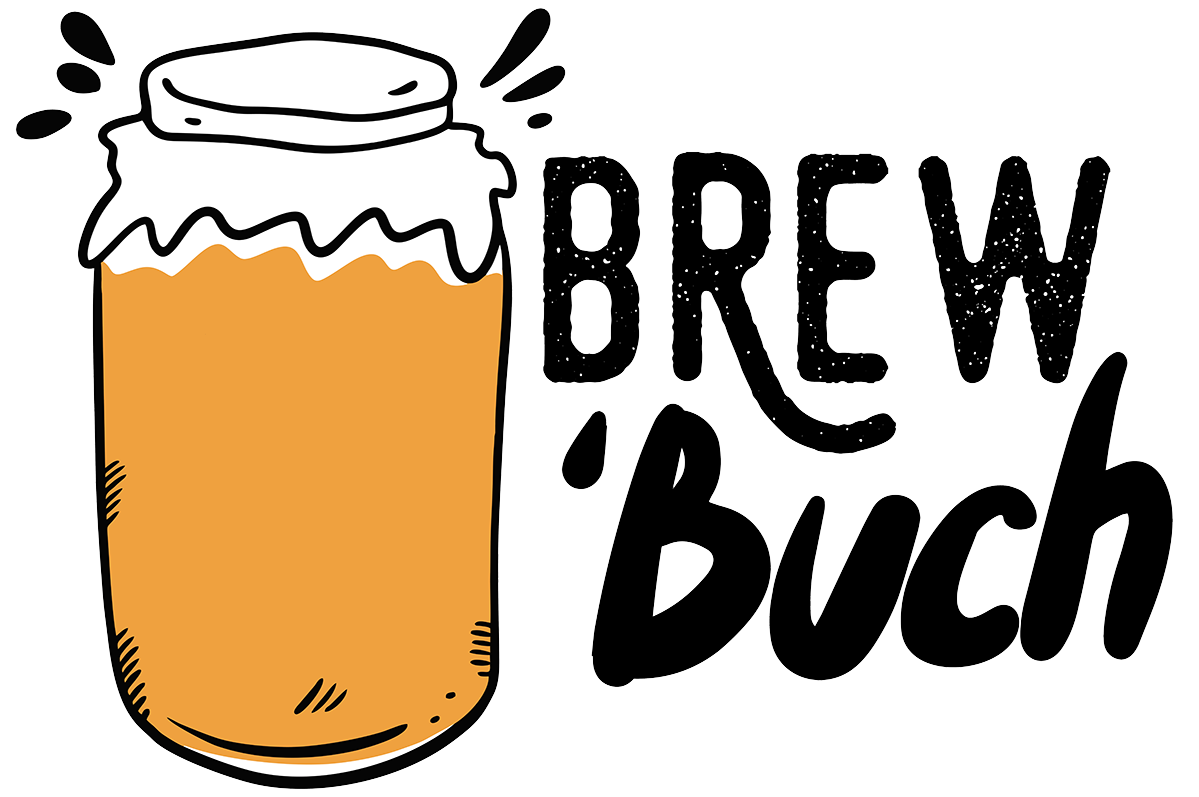
Do I need to discard the entire batch when finding mold? So, discard the mother as well?
Yes, unfortunately. The mold spores are so small they can’t be seen and can infect future batches, so it’s better to be safe than sorry.
Can I use the “old” scoby I was using to brew the batch that had yeast in it, or do I need to make a new one?
You should be able to use it, I would give it a good rinse under water and replenish it with new starter tea.